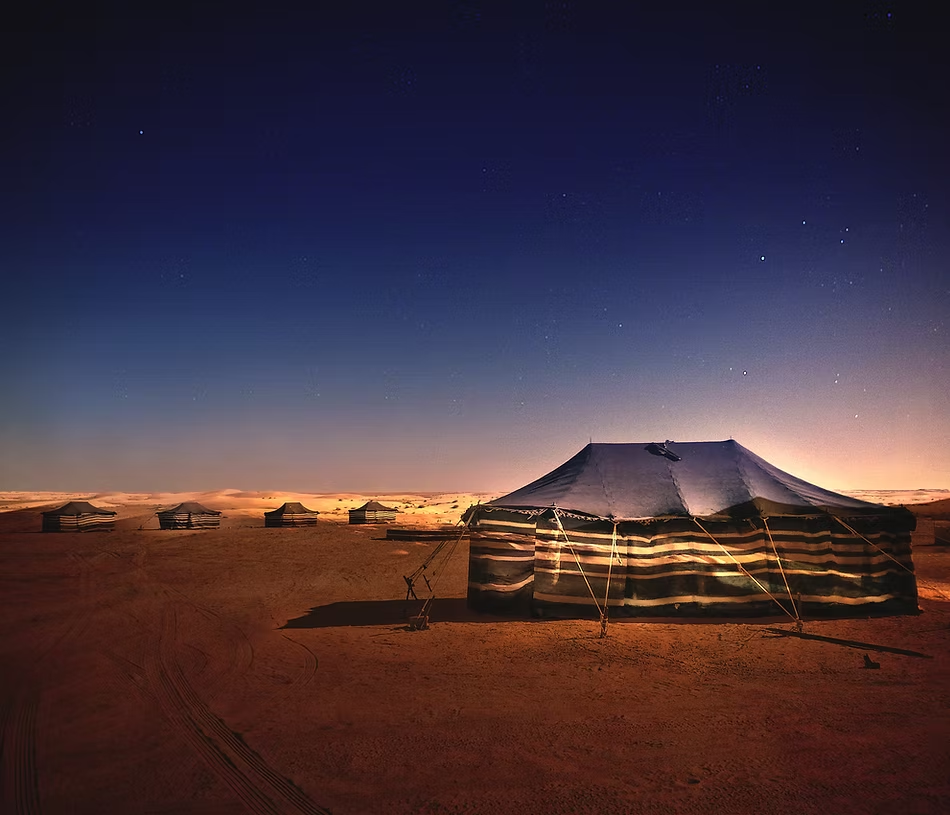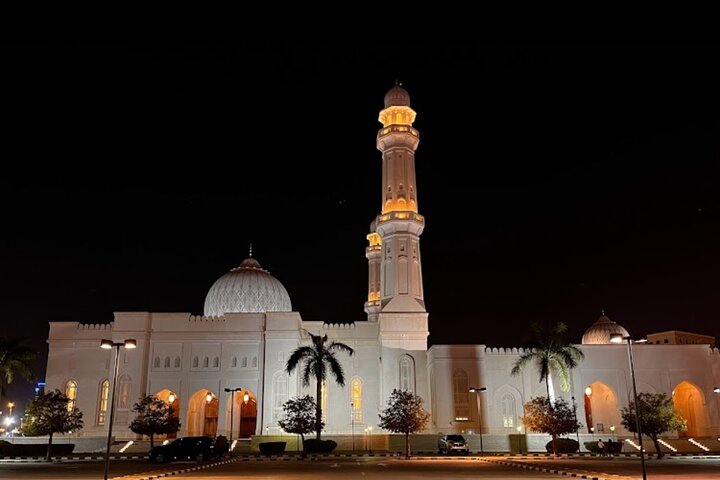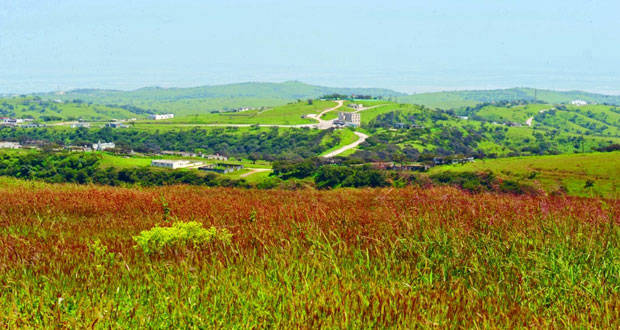Introduction: A Journey into Bedouin Camp in Dhofar
Dhofar, the southernmost region of Oman, is known for its lush monsoon landscapes, UNESCO frankincense sites, and the endless golden dunes of the Rub’ al Khali. But beyond its natural beauty lies an equally captivating cultural treasure—the chance to experience life in a Bedouin camp.
For centuries, the Bedouins of Dhofar have lived in harmony with the desert, relying on their knowledge of the land, their herds, and the timeless traditions passed down through generations. Visiting a Bedouin camp offers travelers a rare opportunity to step into this heritage and see the desert through the eyes of its original inhabitants.
Why a Bedouin Camp Experience in Dhofar is Unique
- Authentic Cultural Immersion
Unlike staged tourist villages, Dhofar’s Bedouin camps are run by families who still live part of the year in the desert. Guests are welcomed as friends, sharing in the genuine warmth of Omani hospitality. - Stunning Desert Backdrop
Camps are often located near the dramatic dunes of the Empty Quarter or the scenic gravel plains of Dhofar’s interior. - Connection to History
The Bedouin lifestyle is closely tied to the ancient frankincense trade routes, which passed through the region for thousands of years.
What to Expect at a Bedouin Camp in Dhofar
- Traditional Bedouin Tents – Made from woven goat hair or palm fronds, offering shade and shelter from desert winds.
- Omani Coffee & Dates – Guests are greeted with qahwa and fresh dates, a symbol of hospitality.
- Camel Rides – Experience the Bedouin’s traditional mode of transport across the dunes.
- Storytelling Evenings – Hear tales of desert journeys, ancient trade, and Bedouin wisdom around a campfire.
- Bedouin Cuisine – Meals cooked over open flames, featuring rice, lamb, and freshly baked flatbread.
- Star Gazing – With zero light pollution, the desert sky reveals a breathtaking canopy of stars.
Activities to Enjoy
- Sunrise and Sunset Photography – Capture the dunes glowing in shades of gold and red.
- Sandboarding – Slide down soft desert slopes for a fun adventure.
- Guided Desert Treks – Learn about desert plants, wildlife, and survival skills.
- Visit Nearby Attractions – Many camps organize trips to:
- Wadi Dawkah – Frankincense groves.
- Ubar Archaeological Site – The fabled “Atlantis of the Sands.”
- Zigzag Road & Hidden Beach – Scenic drives and secluded shores.
Best Time to Visit a Bedouin Camp in Dhofar
The ideal season is October to April, when the desert climate is cooler and comfortable. In the Khareef season (June to September), some camps relocate closer to green valleys and mountains, offering a unique blend of desert and monsoon experiences.
Why European Travelers Love Bedouin Camps in Dhofar
- Romantic Desert Ambiance – Many travelers compare the experience to stepping into a scene from Arabian Nights.
- Cultural Learning – Opportunity to interact directly with Bedouins, learning about their history, crafts, and traditions.
- Adventure Combined with Comfort – Camps often provide modern amenities like comfortable bedding, while maintaining traditional charm.
- Off-the-Beaten-Path – Away from mass tourism, it’s an intimate and authentic encounter.
Travel Tips for Visiting a Bedouin Camp
- Dress Modestly: Lightweight, loose clothing suitable for desert conditions.
- Bring a Jacket: Nights can be surprisingly cool, especially in winter.
- Stay Hydrated: Drink plenty of water during activities.
- Be Respectful: Ask before taking photos of people or private areas.
Responsible Tourism in Bedouin Camps
Your visit supports local Bedouin families and helps preserve cultural traditions. Many camps use eco-friendly practices such as solar lighting and sustainable grazing. Guests are encouraged to minimize waste and respect the desert environment.
Conclusion: A Desert Memory You’ll Never Forget
Spending a night in a Bedouin camp in Dhofar is more than just an overnight stay—it’s a cultural journey, an adventure in the vast silence of the desert, and a chance to connect with a way of life that has stood the test of time.
From the warmth of Bedouin hospitality to the mesmerizing beauty of the Rub’ al Khali, this is an experience that will stay with you long after you leave. Whether you come for the starry skies, the camel rides, or the deep conversations by the fire, the desert will welcome you, and the Bedouins will make you feel at home.



